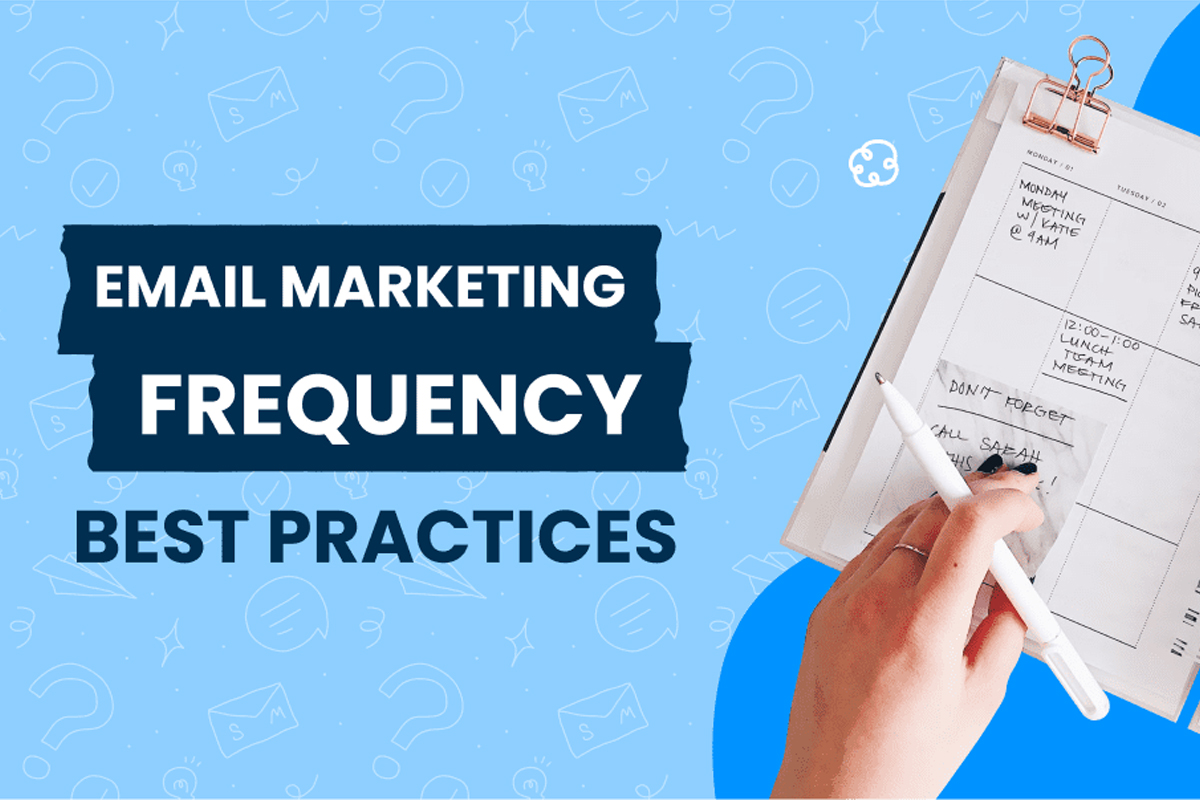Email Marketing Frequency: Finding the Right Balance for Your Campaigns
You understand the effectiveness of email marketing as a digital marketer. One of the best methods for attracting new clients and keeping existing ones happy is email. But one of the most important queries when it comes to email marketing is how frequently to send emails.
Your subscribers may feel overloaded and unsubscribe if you send them too many emails. If you send them too few emails, they can stop thinking about your company and promotions. What is the ideal frequency for email marketing then? Let’s start now.
What is Email Marketing Frequency?
How frequently you send emails to your subscribers is referred to as email marketing frequency. It’s crucial to strike the perfect balance between keeping your subscribers top-of-mind and refraining from sending them an excessive number of emails.
Industry, email type, and subscriber preferences are just a few of the variables that might affect how frequently emails are sent. A daily email, for instance, would be appropriate for a news website but excessive for a retail company.
Best Practices for Email Marketing Frequency
So, what are the ideal email marketing frequency practices? Following are some suggestions:
-
Take your subscribers’ preferences into account
To determine the ideal email frequency, start by taking your subscribers’ preferences into account. Find out how frequently your subscribers want to hear from you by conducting a survey. Additionally, you can offer choices for various email frequency options, such as weekly or monthly.
-
Be Reliable
When it comes to the frequency of email marketing, consistency is crucial. Make sure to meet your subscribers’ expectations if you set them. Make sure to send the weekly newsletter every week if you say you will.
-
Segment Your List
Segmenting your email list can help you tailor your email frequency to different groups of subscribers. For example, you might send more frequent emails to your most engaged subscribers and less frequent emails to those who are less active.
-
Test and Optimize
Testing and optimizing your email frequency can help you find the sweet spot for your audience. Try different frequencies and track your results to see what works best. You can also use A/B testing to compare different email frequencies.
-
Keep Track of Your Metrics
Monitoring your email analytics might assist you in understanding how your subscribers interact with your emails. If you observe a decrease in engagement, it could be because you’re sending too many emails.
How Frequently Should Marketing Emails Be Sent?
Now that we’ve reviewed the finest email marketing frequency techniques, let’s get to the major question: how frequently should you send marketing emails?
The answer will vary depending on a variety of factors, but here are some broad rules to follow:
- Promotional Emails: Promotional emails, such as sales and discounts, can be sent more frequently, such as once a week or every other week.
- Newsletter Emails: Newsletter emails should be sent on a consistent schedule, such as weekly or monthly.
- Triggered Emails: Triggered emails, such as welcome emails and abandoned cart emails, can be sent immediately after the trigger event.
- Event Emails: Event emails, such as invitations and reminders, should be sent leading up to the event and on the day of the event.
- Re-engagement Emails: Re-engagement emails should be sent to inactive subscribers who haven’t engaged with your emails in a while.
Conclusion
The frequency of email marketing is a crucial part of every email marketing strategy. You may establish the proper mix for your audience by following best practices and taking into account your subscribers’ preferences. To ensure that your email campaigns are effective and engaging, remember to be consistent, segment your list, test and optimize, and monitor your analytics.
There is no one-size-fits-all solution for determining the optimal email marketing frequency. It is determined by your target audience, industry, and objectives. However, by adhering to these best practices and experimenting with different frequencies, you can find the right balance for your subscribers.
Here are the main points to remember regarding email marketing frequency:
- Segment your list to tailor your frequency to different groups of subscribers
- Test and optimize your frequency to find the sweet spot for your audience
- Monitor your metrics to track engagement and adjust your frequency as necessary
- Take into account your subscriber’s preferences when choosing an email frequency
- Be consistent and follow through on your promises
By finding the right balance for your email frequency, you can keep your subscribers engaged and drive more conversions for your business.
In conclusion, email marketing is a powerful tool for businesses of all sizes, and email frequency is an important aspect of any successful campaign. By following these best practices and guidelines for email frequency, you can optimize your campaigns and achieve better engagement with your subscribers. Remember to always consider your audience’s preferences and test different frequencies to find what works best for your business. Happy emailing!



